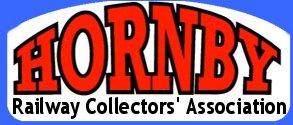O Gauge Fact Sheet
| MANUFACTURER: Meccano Ltd. and associated companies at: Binns Road, Liverpool (1920 to 1963); Rue Rebeval, Paris (1926 to 1932); Rue Valentine, Bobigny, France (1932 to 1963); Elizabeth NJ, USA (1927 to 1929). DESIGNERS: Largely unknown, but contributors included Frank Hornby, Donald Smith and Ronald C. Wyborn. |
 |
 |
GAUGE AND SCALE: The gauge was approximately 32mm, although this varied somewhat over the years. These were toy trains, and no train in the Hornby Series was a true scale model, although the true-to-type No.2 Special Locos were not far from 7mm to the foot. The bogie coaches had to be much too short, because of the restricted 2 foot (60cm) radius of most tinplate track. |
| INTRODUCTION: The Hornby Trains were one of two ranges introduced by Meccano Ltd in 1920, they were in effect special- purpose Meccano sets, the bodies of the clockwork logo, tender and wagon being held together by Meccano-style nuts and bolts. This feature, and the all-British manufacture, allowed the trains to be sold at a premium over the price of foreign competitors, to a loyal and enthusiastic public who knew and trusted the Meccano name. Right from the first, surprisingly large quantities of the trains were made and sold. (The other early Meccano Ltd brand, the Tinprinted Train, was an unimaginative copy of a German product which failed dismally, and deservedly, in the marketplace.) The range of wagons, coaches, accessories and rails mushroomed in the early 20s, giving an excellent choice far beyond most children's pocket, but not beyond their dreams. |
 |
 |
MATERIALS USED: All the early Hornby trains were metal, with tinplate being used for much of the bodywork. The cheaper ranges were tinprinted, but most were enamel painted. Brass parts were used on the constructional trains, including the splendid polished domes. Diecastings were used for wheels and certain other fittings, particularly on locos; plastics were used for some electrical parts. |
| POWER: Although most Hornby O-gauge trains were clockwork, electric trains were first made in the early 1920s, and they became increasingly popular by the late 1930s. After the war, however, nearly all the trains were clockwork, with only a very few electric trains made, all for export. |
 |
